Ever heard a cyclone’s name and wondered who came up with that name or how come for a while they seemed to have a feminine names as if only women scorned had fury that hell hath not…
I was curious about it too, so I looked it up…
A brief history into the naming of storms
The practice of naming storms begun years ago, as part of identifying and keeping track of storms; nautically storm systems were referred to by cumbersome latitude-longitude identification configurations but with time it was realised that short distinctive names made it easier to remember than the technical terms and also heightened people’s interest thereby raising awareness and also preparedness for the storm.
The names used to be arbitrary meaning there was no formula and sometimes the first people/vessel to spot or come in contact with the storm had the honour of coming up with the name of the storm. The name could have been a place, an object or even a saint’s day on which they occurred, some might have been lovers scorned
With time, there was need of a more organized system and meteorologists worked out a list in alphabetic order to pick from; predominantly feminine names at first but now masculine names were eventually incorporated.
To date, the list of names are maintained and updated by an international committee of the World Meteorological Organization.
There are five tropical cyclone regional bodies, and each region determines a list of names for their region.
- ESCAP/WMO Typhoon Committee
- WMO/ESCAP Panel on Tropical Cyclones
- RA I Tropical Cyclone Committee,
- RA IV Hurricane Committee
- RA V Tropical Cyclone Committee.

The names used are such that they are familiar to the people in the region and are not picked after any particular person or alphabetic preference; the main reason for the names is such that people can remember and track storms in their region, helping gear up risk, awareness, preparedness, management and reduction
**A name is retired or replaced from the list is after a storm so devastating that the future use of the name on a different storm would be inappropriate for reasons of sensitivity.
Tropical Cyclone Names Worldwide
Caribbean Sea, Gulf of Mexico and the North Atlantic Hurricane names
The National Hurricane Center names from six lists that are used in rotation each year with names in alphabetical order alternating between male and female

Eastern North Pacific Hurricane Names
Six lists are used in yearly rotation

Central North Pacific cyclone Names
The names are used one after the other. When the bottom of one list is reached, the next name is the top of the next list.
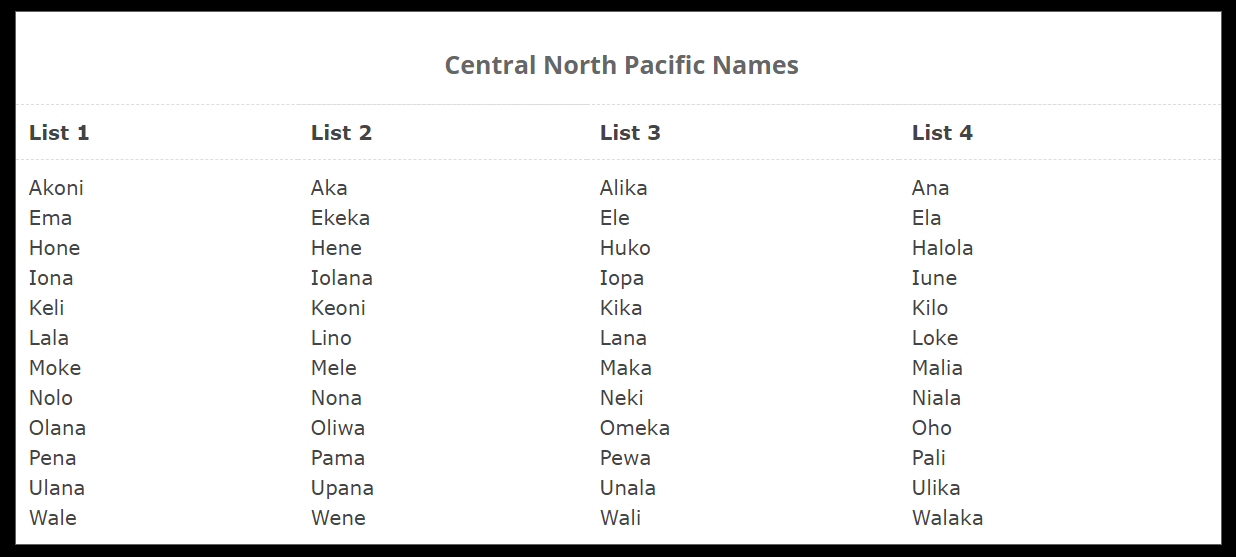
Western North Pacific and the South China Sea Cyclone Names
The Regional Specialized Meteorological Centre (RSMC) Tokyo – Typhoon Centre will assign a tropical cyclone a name from the list followed by a 4-digit identification number (in brackets).
Unlike other basins, storms are also named after plants, animals, objects, and mythological beings. These names are used sequentially. That is, if the last storm of the year is Cimaron, the first storm of the next year is Jebi.

Australian Tropical Cyclone Warning Centre’s (TCWC) Cyclone names
There’s a single list of names that are used by all of the Bureau of Meteorology Tropical Cyclone Warning Centres (TCWC) and the names are assigned in alphabetical order and used in sequentially without regard to year.
If a named cyclone moves into the Australian region from another country’s zone of responsibility, the name assigned by that other country will be retained.
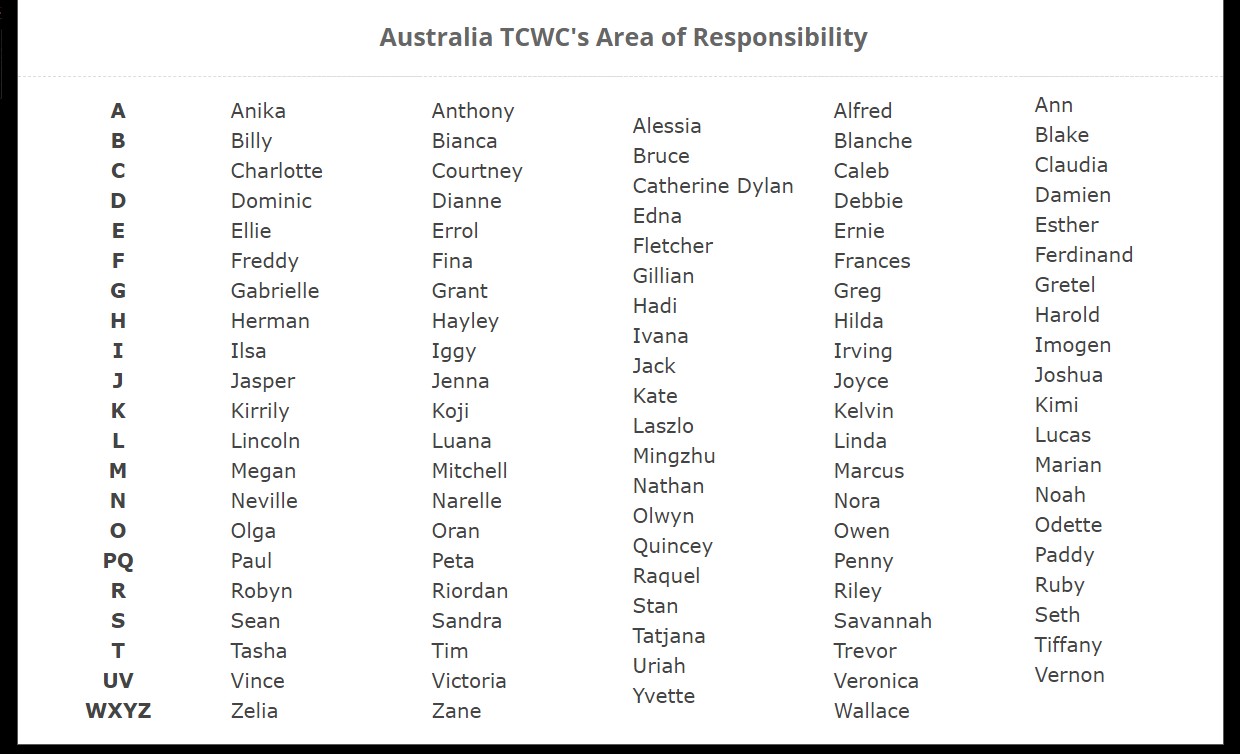
Southern Pacific Cyclone Names
Regional Specialised Meteorological Centre Nadi’s area of responsibility has lists A, B, C, and D which are used sequentially one after the other. The first name in any given year is the one immediately following the last name from the previous year.
List E is a list of replacement names if they become necessary.
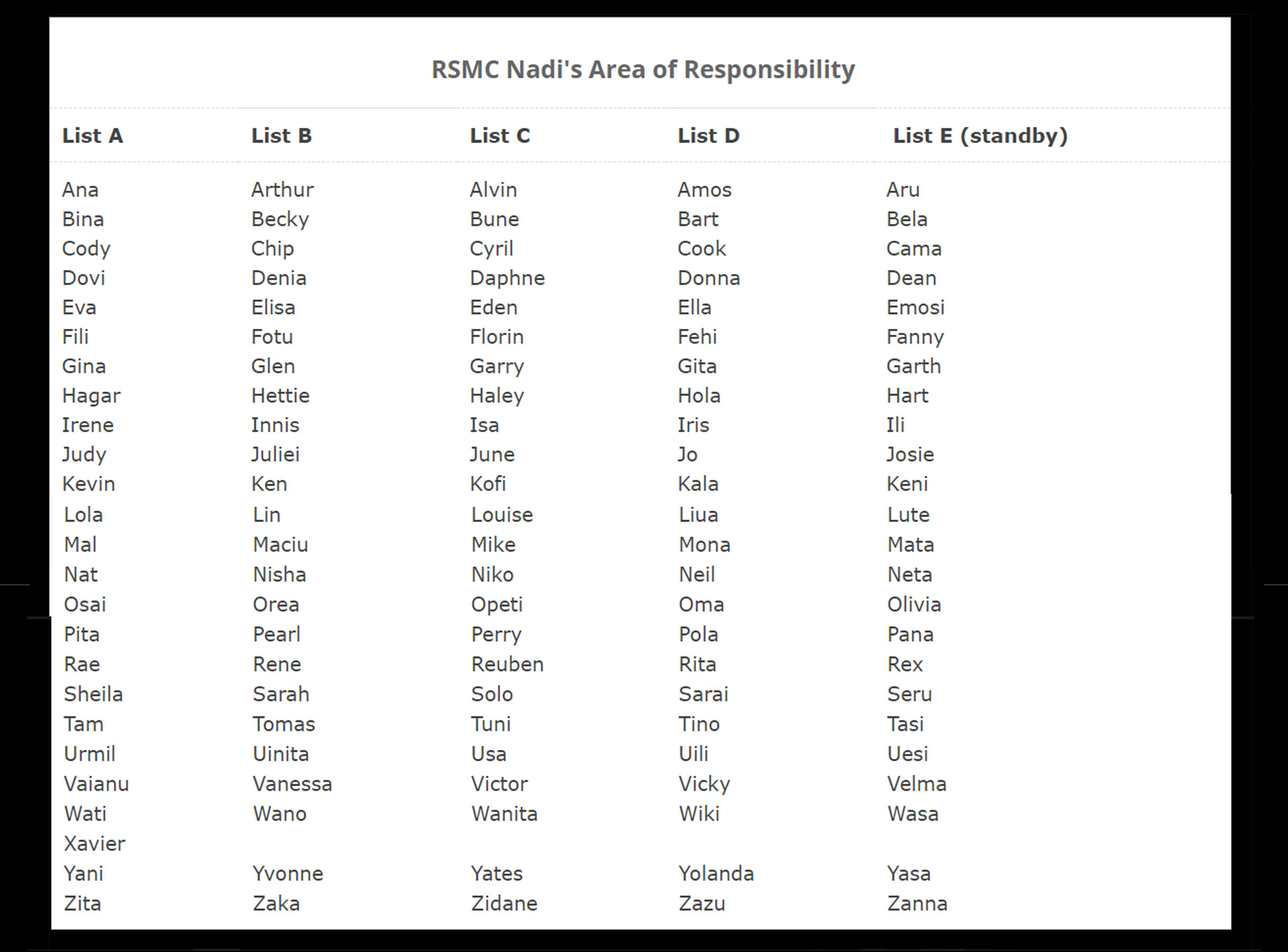
Papua New Guinea; Port Moresby Tropical Cyclone Names
The name of a new tropical cyclone is determined by sequential cycling through List A. Standby List B is used to replace retired names in List A and any replacement will be added to the bottom of List A to maintain the alphabetical order.
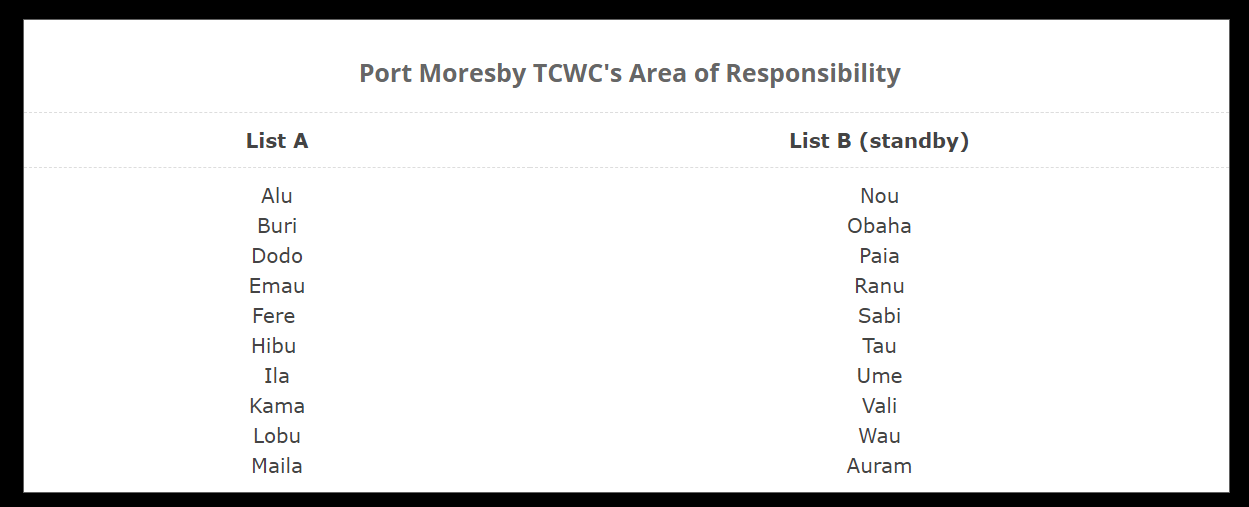
Indonesia; Jakarta Tropical Cyclone Warning Centre’s Cyclone Names
The name of a new tropical cyclone is determined by sequential cycling through List A. Standby List B is used to replace retired names in List A and any replacement will be added to the bottom of List A to maintain the alphabetical order.

Northern lndian Ocean Names
The RSMC tropical cyclones New Delhi will give a tropical cyclone an identification name from the below name list. The identification system covers both the Arabian Sea and the Bay of Bengal

Southwest Indian Ocean Names
The names that are going to be used during a season are selected in advance by the World Meteorological Organization’s RA I Tropical Cyclone Committee from names submitted by member countries
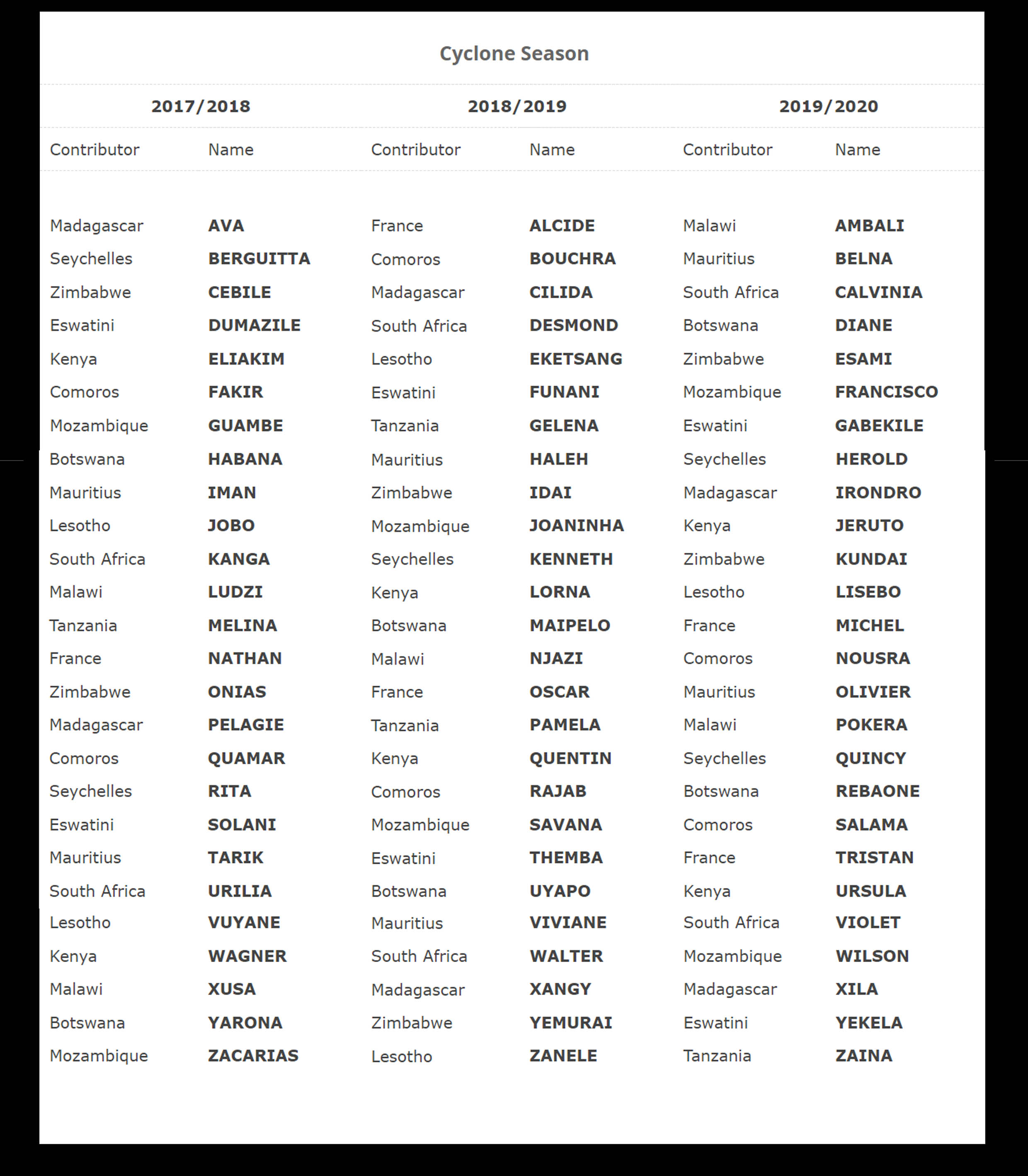
~B
If you are here because you are wondering where Cyclone Idai got its name from then someone from Zimbabwe on the Tropical Cyclone Committee suggested the name at some WMO meeting, its almost poetic that the cyclone made landfall and will terminate in the landlocked country
And if you ever wondered why storms that ravage the United starts seem to start at almost the same part of Africa and follow an almost similar route, I also did, and the answers might shock you… Of Hurricanes and avenging spirits

Leave a comment